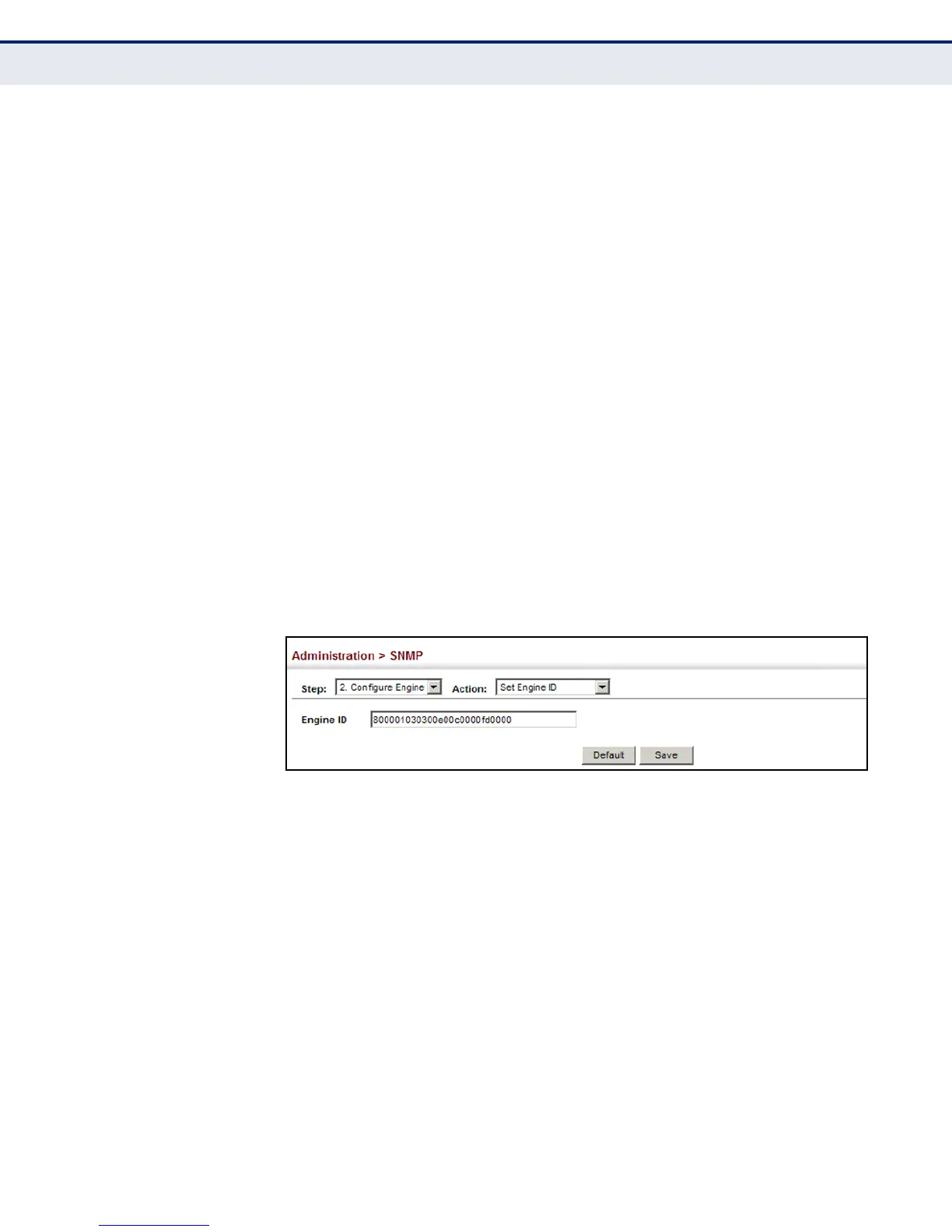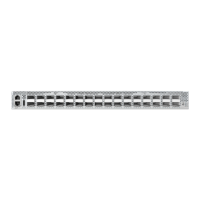C
HAPTER
14
| Basic Administration Protocols
Simple Network Management Protocol
– 358 –
ID is deleted or changed, all SNMP users will be cleared. You will need
to reconfigure all existing users.
PARAMETERS
These parameters are displayed in the web interface:
◆ Engine ID – A new engine ID can be specified by entering 9 to 64
hexadecimal characters (5 to 32 octets in hexadecimal format). If an
odd number of characters are specified, a trailing zero is added to the
value to fill in the last octet. For example, the value “123456789” is
equivalent to “1234567890”.
WEB INTERFACE
To configure the local SNMP engine ID:
1. Click Administration, SNMP.
2. Select Configure Engine from the Step list.
3. Select Set Engine ID from the Action list.
4. Enter an ID of a least 9 hexadecimal characters.
5. Click Apply
Figure 196: Configuring the Local Engine ID for SNMP
SPECIFYING A REMOTE
ENGINE ID
Use the Administration > SNMP (Configure Engine - Add Remote Engine)
page to configure a engine ID for a remote management station. To allow
management access from an SNMPv3 user on a remote device, you must
first specify the engine identifier for the SNMP agent on the remote device
where the user resides. The remote engine ID is used to compute the
security digest for authentication and encryption of packets passed
between the switch and a user on the remote host.
CLI REFERENCES
◆ "snmp-server engine-id" on page 636
COMMAND USAGE
◆ SNMP passwords are localized using the engine ID of the authoritative
agent. For informs, the authoritative SNMP agent is the remote agent.
You therefore need to configure the remote agent’s SNMP engine ID
before you can send proxy requests or informs to it. (See "Configuring
Remote SNMPv3 Users" on page 370.)

